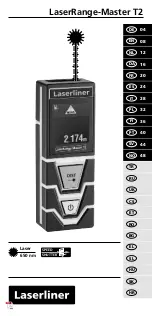
20
World Precision Instruments
When bound to calcium, Fluo-4 has a maximum absorbance at 494nm, with an
emission maximum occurring at 516nm.
NOTE
: When using a single-emission, single-excitation fl uorophore like Fluo-
4, the proximity of the fi ber-optic probe to the prepared tissue has a signifi cant
infl uence on the intensity of fl uorescence that is collected. If the probe is adjacent
to contracting tissue, movement artifacts can cause fl uctuations in the amplitude of
the fl uorescence being recorded. This problem is eliminated through the use of a
secondary fl uorophore to track the motion artifacts in the fl uorescence recordings.
Fura Red is a convenient, secondary fl uorophore, which can be coupled with Fluo-4
to reduce these artifacts.
Percent Signal
0
20
40
60
80
100
Wavelength [nm]
400
500
600
700
800
470nm LED [emission]
Fluo-4 [excitation]
Fluo-4 [emission]
Fura Red [excitation]
Fura Red [emission]
535nmFilter
700nmFilter
Fig. 38— The excitation, emission and fi ltering of Fluo-4 and Fura Red using the SI-BF-100
Biofl uorometer.
In Fig. 38, Fluo-4 is identifi ed in red and Fura Red is identifi ed in blue. The intrinsic
absorbencies of the fl uorophores are represented by dashed lines. The emission
spectra are represented by solid lines. The optimal site for fl uorophore excitation
occurs at the peak absorbance. The solid gray area represents the emission of a
470nm LED module used to excite the fl uorophores. The bandpass spectrum of the
emission fi lters for Fluo-4 and Fura Red are represented by the appropriately shaded
areas.
As indicated in Fig. 38, the 470nm LED excites both Fluo-4 and Fura Red when
calcium is bound. The fi rst photomultiplier (PMT1) is confi gured with a 535nm fi lter
to collect the emission from Fluo-4. Concurrently, the second photomultiplier (PMT2)
is set up to collect the emission from Fura Red by use of a 650nm fi lter. Collecting
the emissions of these two dyes permits the use of a ratiometric method to
determine changes in calcium concentrations that take place during the contraction
and relaxation of the tissue being studied. When the output of PMT1 is divided
by the output of PMT2, any fl uctuations in fl uorescence intensity caused by the
movement of tissue in front of the optical probe are automatically removed from
the data. The ratio of the two PMT outputs can be recorded directly from one of the
three outputs on the front of the Biofl uorometer.
Содержание SI-BF-100
Страница 3: ...iv World Precision Instruments...









































